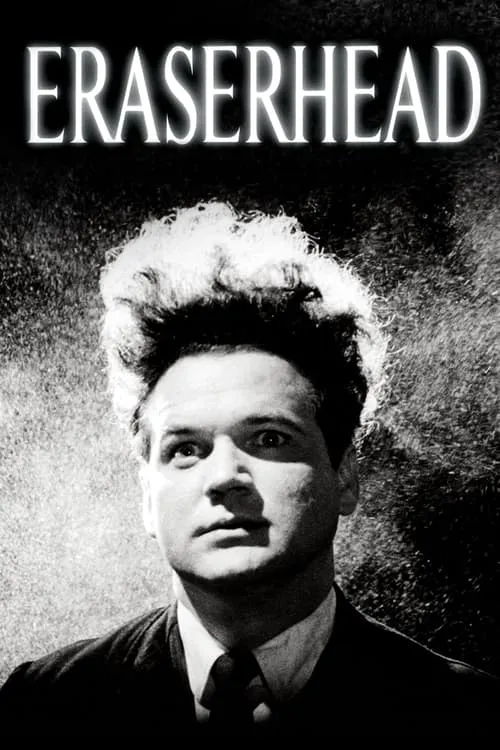Eraserhead

Plot
Eraserhead, a surrealist body horror film, is the directorial feature of David Lynch, released in 1977. The film unfolds in a dystopian industrial setting, where the stark and bleak landscapes mirror Henry Spencer's inner turmoil, as he navigates the complexities of adulthood and fatherhood. Henry, played by Jack Nance, is a young industrial laborer, struggling to cope with the monotonous drudgery of his job and the weight of his responsibilities. His girlfriend, Mary, played by Charlotte Stewart, gives birth to a mutant child that lets out unearthly screams, causing an unbearable strain on their already volatile relationship. As Henry tries to come to terms with his new role as a father, he is confronted with the harsh realities of adulthood, forcing him to reevaluate his own identity and sense of purpose. Henry's life is set against the stark backdrop of an industrial wasteland, where the cityscape looms over him like a monolith of despair. His apartment is a dingy, cramped space, reflecting the claustrophobic nature of his thoughts and feelings. The bleakness of the environment resonates deeply with Henry's inner world, mirroring the turmoil and despair that he feels as he struggles to navigate his new reality. As Henry attempts to care for his mutant child, he is met with a series of unsettling and disturbing events that further exacerbate his sense of unease. The child's unearthly screams seem to be a manifestation of Henry's own guilt and inadequacy as a father, and the fact that the child is a mutant only serves to further underscore the sense of hopelessness and despair that pervades the film. Throughout the film, Henry's relationship with Mary deteriorates rapidly, and their interactions become increasingly fraught and disturbing. Mary, it seems, is equally at sea, struggling to cope with the responsibilities of motherhood and the burden of her own unfulfilled desires. The tension between Henry and Mary becomes increasingly suffocating, reflecting the toxic nature of their relationship and the fact that they are both trapped in a cycle of misery and despair. One of the most striking elements of Eraserhead is its use of industrial landscapes and the sounds that inhabit them. The film is renowned for its eerie sound design, which captures the cacophony of industrial sounds and uses them to create a sense of unease and tension. The sound of screeching tires, hissing pipes, and the constant hum of machinery all combine to create a sonic landscape that is both disorienting and claustrophobic. As Henry navigates his industrial environment, he is confronted with a series of enigmatic and dreamlike sequences that serve to further underscore the sense of disorientation and disconnection that pervades the film. These sequences, which often involve Henry encountering strange and bizarre characters, serve to disrupt the audience's expectations and blur the boundaries between reality and fantasy. Despite the fact that Eraserhead is often described as a surreal body horror film, it is worth noting that the film's use of violence and horror is relatively subtle, and often implies rather than explicitly depicts. Instead, the film relies on suggestion and implication to create a sense of unease and discomfort in the audience. As such, the film's use of gore and violence is often described as more 'hinted at' than explicitly depicted, reflecting the fact that much of the film's horror is located in the realm of the imagination. Ultimately, Eraserhead is a film about the fragility and uncertainty of life, and the ways in which our relationships with others can be both nourishing and suffocating. As Henry struggles to come to terms with his new responsibilities as a father, he is forced to confront the harsh realities of adulthood and the fact that we are all, ultimately, alone. The film's exploration of these themes is both profound and unsettling, reflecting the fact that Eraserhead is a film that lingers long after it has ended, refusing to be forgotten or ignored.
Reviews
Recommendations




